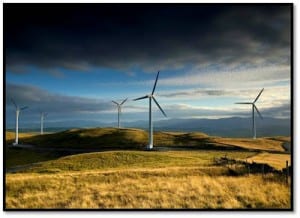China-based solar manufacturer JinkoSolar Holding has announced the addition of a Queensland-based Australian subsidiary – JinkoSolar Australia – with the opening of a new office, located halfway between Brisbane and the Gold Coast, that will house around 4-5MW of solar PV modules for sale and delivery to JinkoSolar’s local partners and help boost the company’s Australian market.
Jinko chairman David Li said that “now more than ever is the most strategic time for JinkoSolar to stake its hold in Australia’s market,” which he described as “highly oriented towards renewable energy.” And he may be right, with some forecasts suggesting that Australia could add 10GW of solar PV by the end of the decade, and, as Li suggests, “grid parity for the residential market in states such as New South Wales” coming within reach.
But we were a bit bemused by this added reason for Jinko’s move, Australia’s apparent “adoption” of the ’ Zero Carbon Australia 2020 Stationary Energy Plan’. The development of the aspirational report by Beyond Zero Emissions has been a welcome addition to Australia’s carbon and energy policy debate, but as far as we know BZE chief Matthew Wright is not yet the Minister for Energy.
Infigen’s revenue swings
Australia’s largest listed renewables group, Infigen Energy, has released its first half production and revenue estimates, reporting a 7 per cent rise in revenue from Australian operations for the corresponding period, but a small drop in revenue in the US, and drops in production levels in both the US and Australia. The wind power-driven business said that it expects to report evenue of $125.7 million from its Australian and US businesses, down from $126.4 million for the six months ended 31 December 2010.
Infigen attributes the hits to production – down 7 per cent in the US, and 1 per cent in Australia – to unfavourable wind conditions, adverse foreign exchange movements and, in Australia, network constraints at the Lake Bonney 2&3 wind farms in South Australia. The increase to revenue in Australia – $A63.9 million, up from $A59.9 million in H1 FY11 – is attributed to improved wholesale electricity and large-scale generation certificates (LGC) prices and the initial contribution from the Woodlawn Wind Farm, partially offset by lower production. The company says that at 31 December 2011, it held approximately 204,000 unsold LGCs. Unsold LGCs contributed $A8.5 million to the Australian revenue during the period.
Canberra launches $1bn cleantech fund
The Gillard government on Thursday launched its Clean Technology Investment Programs, which will provide $1 billion in funding for manufacturers to improve energy efficiency and reduce pollution. The two competitive grants-based programs – the $800 million Clean Technology Investment Program and the $200 million Clean Technology Food and Foundries Investment Program – are part of the government’s Clean Energy Future package and are aimed at helping manufacturers invest in new plants and equipment to cut their energy costs and/or reduce carbon pollution, such as switching to less carbon intensive energy sources or installing new manufacturing equipment, processes and facilities to reduce energy consumption and carbon emissions.
Climate and Industry and Innovation Minister, Greg Combet, also announced that the government would change co-contribution requirements to make the grant programs more attractive for small and medium-sized firms. Manufacturers with turnovers of less than $100 million requesting funding under $500,000 will now only have to match the government grants on a dollar for dollar basis. For all other grants under $10 million, applicants will be required to contribute $2 for every $1 from the government. For grants of $10 million or more, applicants will be expected to make a co-contribution of at least $3 for each $1 of support.










